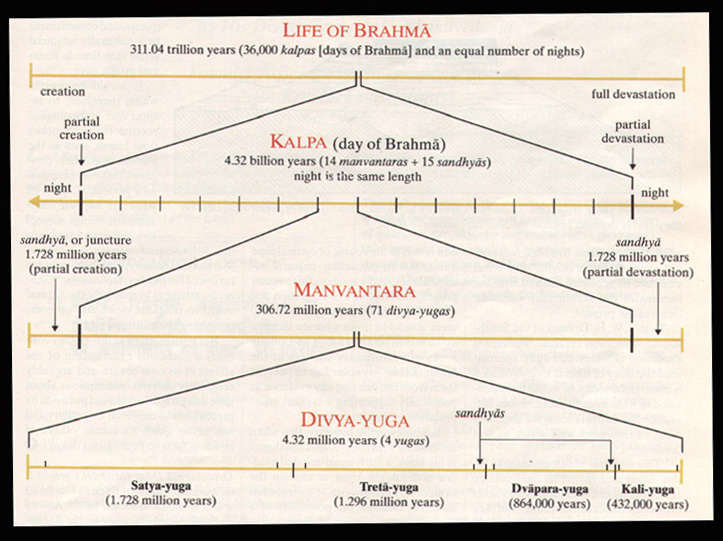________________________________
______________________________________

"Outside of the three planetary systems, the four Yugas multiplied by one
thousand comprise one day on the planet of Brahma. A similar period
comprises a night of Brahma, in which the creator of the universe goes to sleep."
(Srimad Bhagavatam, Canto 3, Chapter 11, Text 22)
__________________________________________________________________
____________________________________________________________

